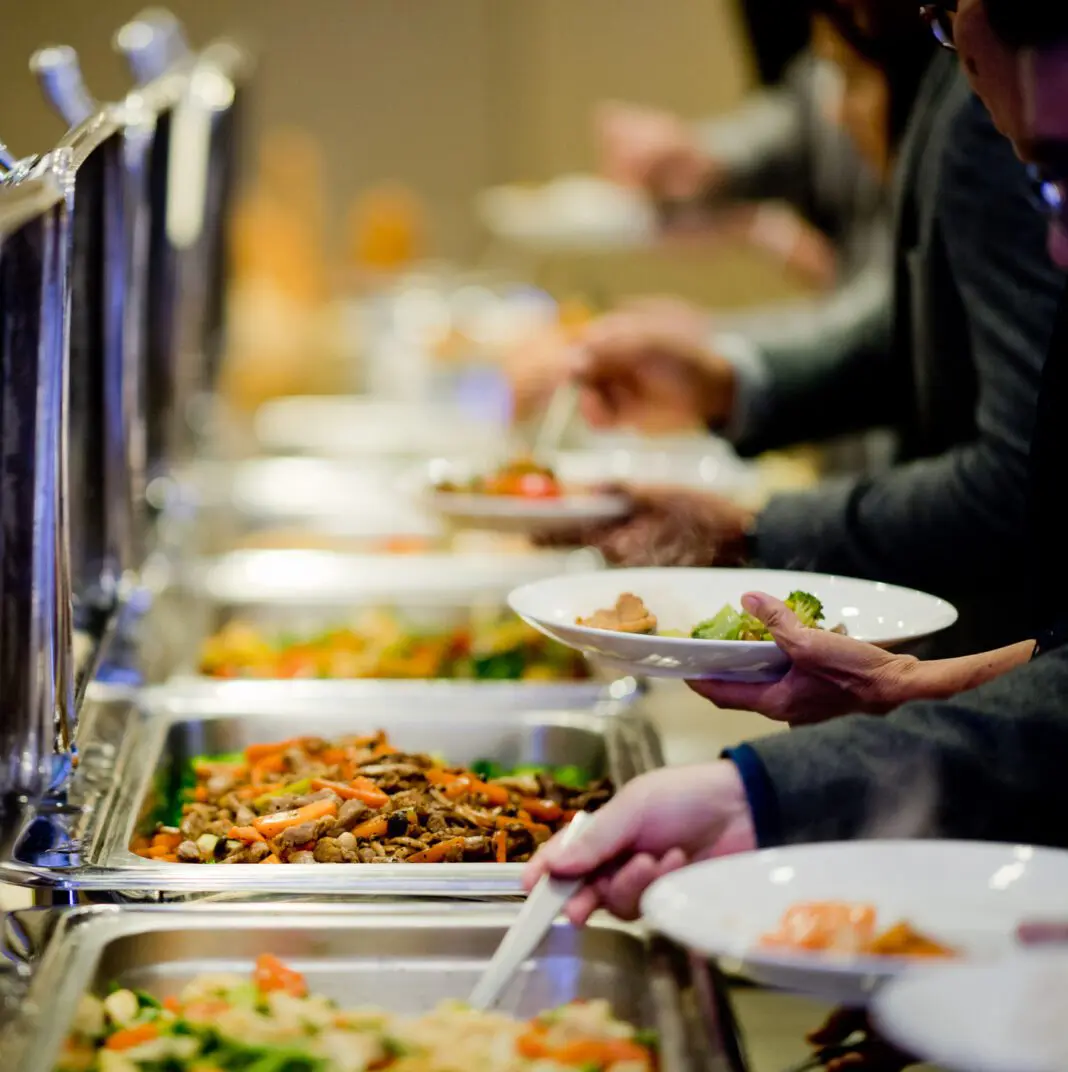Once a symbol of gastronomic abundance and choice, the traditional buffet is now a fading culinary landscape. This article delves into the multifaceted reasons behind the decline of buffet-style dining, revealing surprising factors that have contributed to this changing trend.
1. Health and Hygiene Concerns
Health and hygiene concerns have significantly impacted buffet popularity. The communal nature of buffets, where multiple patrons handle serving utensils, has raised concerns about food safety. According to Quora, such worries, especially in the wake of the COVID-19 pandemic, have made diners wary of buffet settings where the risk of cross-contamination is perceived to be higher.
Increased awareness about hygiene practices in food service has led to a shift in consumer preferences. People are now more inclined towards dining options where they perceive a higher level of food safety and cleanliness.
2. The Unsustainability of Food Waste
Buffets have long been criticized for their contribution to food waste. The Global Research and Consulting at Berkeley notes that nearly half of the food at buffets is wasted. This not only presents environmental concerns, as food waste in landfills releases methane, but also highlights the unsustainability of the buffet model in an era increasingly conscious of environmental impact.
Efforts to minimize food waste have become a significant trend in the restaurant industry. Buffets, with their tendency to prepare large quantities of food to maintain an appearance of abundance, find themselves at odds with this sustainability movement.
3. Changing Consumer Preferences
Today’s diners are more health-conscious and discerning about their dietary choices. The expansive options at buffets often lack diversity in healthy and specialized dietary options, such as keto, paleo, or gluten-free meals. This shift in consumer preferences is detailed in an article on Medium, highlighting how these changing demands have steered customers away from traditional buffets.
The preference for fresh, customizable, and health-focused meals has become more pronounced among younger generations, making the bulk-cooked, often calorie-dense offerings of buffets less appealing.
4. The Impact of Social Media and Food Presentation
In an era dominated by Instagram and food blogging, the visual appeal of food has become crucial. Buffets often fall short in this aspect. As noted by Mashed, the presentation of food at buffets is not as photogenic or unique as dishes at independent restaurants, making them less appealing to a demographic that values aesthetics in dining experiences.
The buffet’s focus on quantity over quality often leads to a presentation that is less curated and visually appealing, which doesn’t resonate well in the social media-driven dining culture.
5. Economic Challenges and Profitability
Running a buffet involves unique economic challenges. The need to keep food abundant and diverse while maintaining affordable prices for customers often squeezes profit margins. Buffets have to balance the cost of producing large quantities of food with the need to keep prices low enough to attract customers. This tightrope walk of profitability has become increasingly difficult in an environment where food costs are rising, and consumer spending habits are changing.
As detailed by Mashed, many large buffet chains have faced financial struggles, including debt from expansion and lawsuits, leading to the closure of hundreds of locations.
6. The Pandemic’s Lasting Impact
The COVID-19 pandemic has had a profound impact on the buffet industry. Mandated closures and consumer fears about virus transmission in buffet-style settings led to a sharp decline in patronage. The buffet model, reliant on large gatherings and self-service, found itself directly at odds with the public health guidelines that emerged during the pandemic.
Even as restrictions have eased, the lingering effects of the pandemic on consumer behavior have continued to impact buffets. Many diners remain hesitant to return to buffet-style dining due to ongoing health concerns.
7. The Shift Toward On-Demand and Convenience Dining
The rise of on-demand dining options like delivery and takeout has shifted consumer preferences away from traditional dine-in experiences like buffets. As highlighted in the U.S. Restaurant Industry trends, the convenience of having meals delivered directly to homes or the ease of grabbing a quick takeout has become more aligned with the fast-paced lifestyle of modern consumers.
This shift has made the sit-down, time-consuming nature of buffets less attractive, especially to younger demographics who prioritize speed and convenience in their dining choices.
8. Oversaturation and Lack of Innovation
The buffet industry has faced challenges due to oversaturation and a lack of innovation. The concept of buffets expanded rapidly in the past, leading to an oversaturated market. This expansion, coupled with a lack of innovation in menu offerings and dining experience, has made buffets less appealing to a market that craves novelty and diversity.
The Business Review at Berkeley points out that younger generations find buffets unappealing due to their traditional, unchanged nature, further contributing to their decline.
9. The Rise in Health Consciousness
Health consciousness has risen dramatically among consumers, influencing dining choices. Buffets typically offer foods high in calories but low in nutrition, like carbs and fats, with limited healthy options. This shift in consumer health awareness has made buffets less attractive, as they often don’t align with the health goals of modern diners.
Today’s diners are more likely to seek out dining options that offer nutritional value and cater to specific health-oriented diets, which buffets often fail to provide.
In conclusion, the decline of buffets is a multifaceted issue, influenced by changing consumer preferences, health and hygiene concerns, environmental impact, and the shifting dynamics of the restaurant industry. While once a popular dining option, buffets face an uncertain future as they struggle to adapt to these evolving trends and expectations. As the dining landscape continues to change, buffets may need to reinvent themselves or risk becoming a relic of the past.

